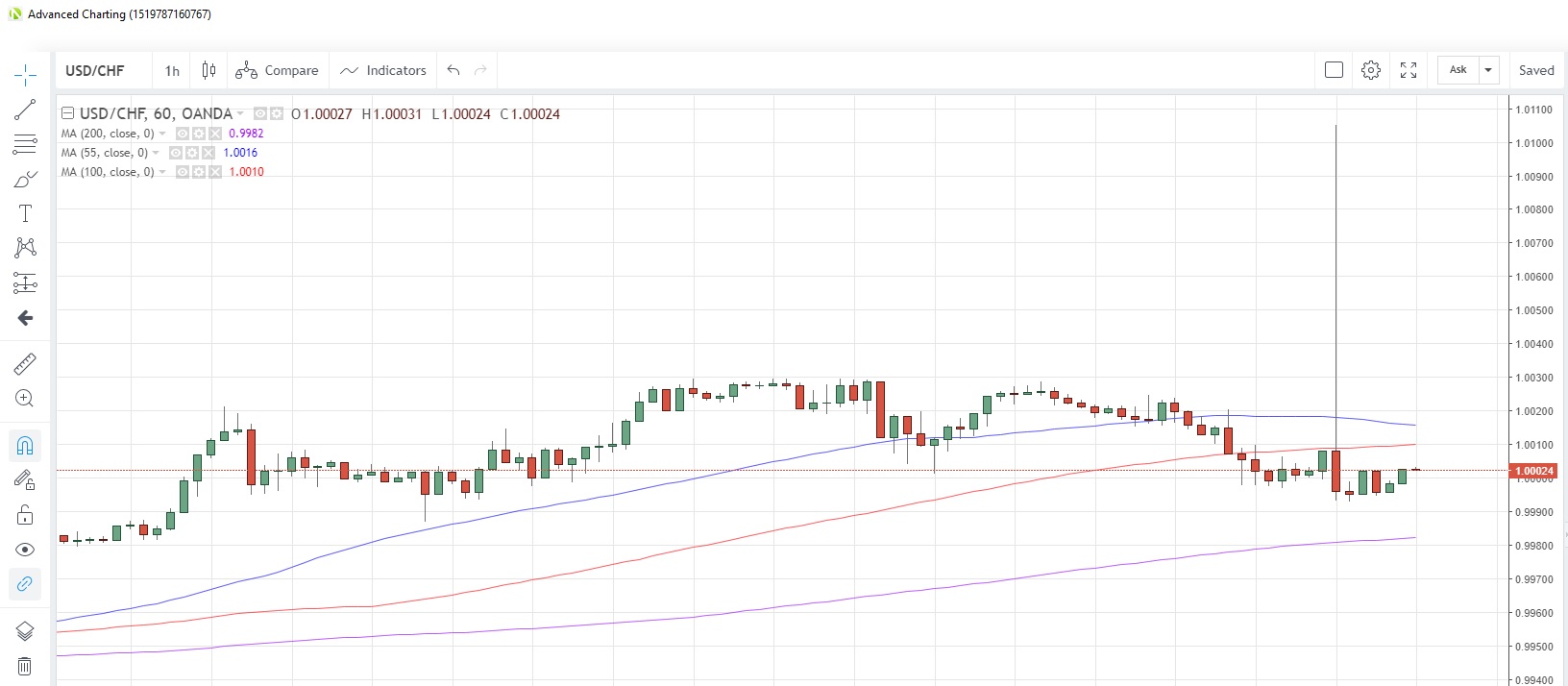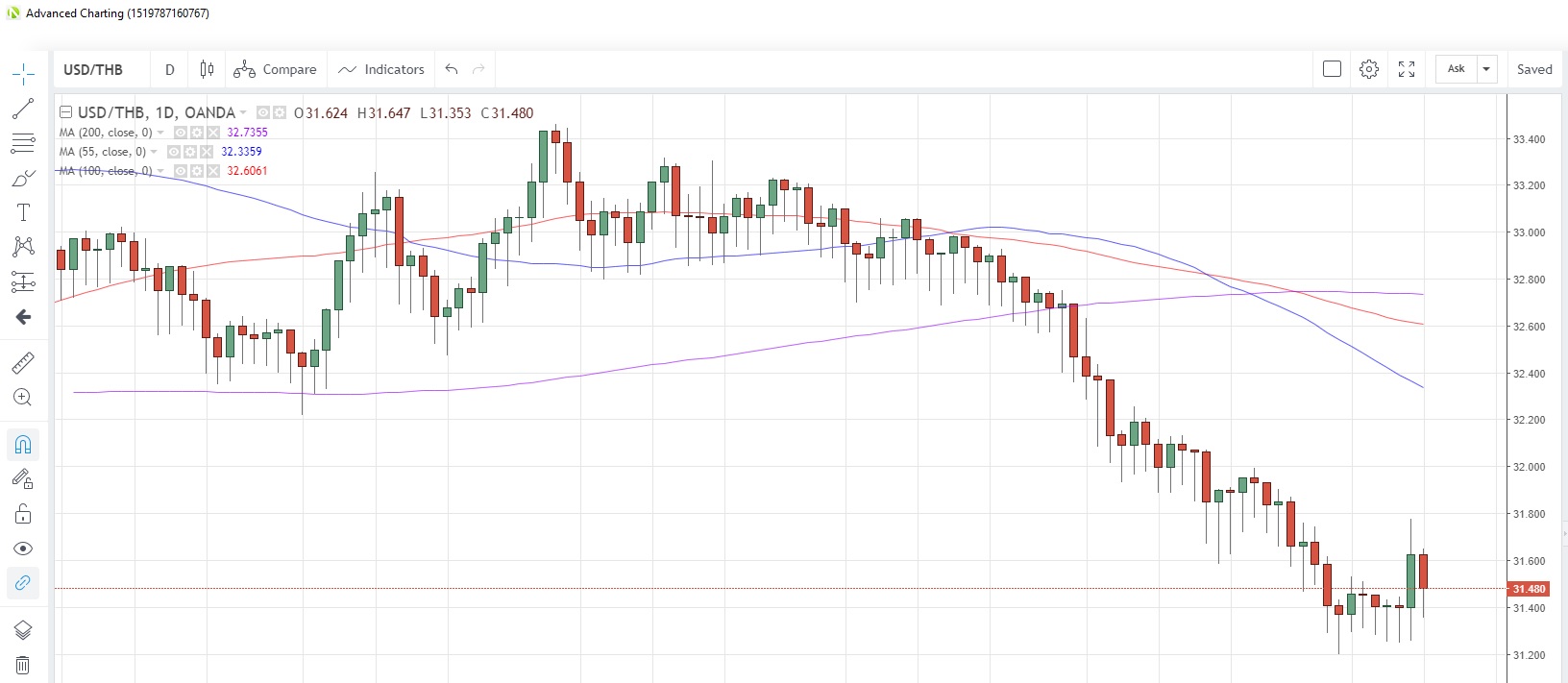USD/CHF hits near-3-month high
Another Japanese holiday, another flash crash. Once again, diminished liquidity in the so-called twilight hours on a Japanese holiday witnessed aggressive selling of Swiss franc-denominated cross pairs by retail Japanese investors. The action saw USD/CHF surge almost 1% to touch 1.0106, the highest since Nov. 14, at about 6am Singapore time (2200hrs on Sunday GMT). CHF/JPY slumped 0.9% to 108.80, the lowest since the last flash crash on Jan. 3.
USD/CHF Hourly Chart
Source: OANDA fxTrade
China markets reopen
Aside from the early moves in the Swiss franc, other currencies were relatively steady as China returned from a week-long break. The Peoples Bank of China set the USD/CNY fix higher at 6.7495 from 6.7081, the highest fix since last July, reflecting the U.S. dollar’s advance since the start of the month.
Whilst on China, the FT carried a report today suggesting that the country’s Q1 GDP growth could slow to 6.0%, which would be the slowest first quarter on record. The article cited the China state-run newspaper, so there may be some element of the authorities pre-preparing the market for softer data.
Thai politics hitting the spotlight
In the run-up to a possible general election later this month, or in March, political parties had until last Friday to nominate their candidates for the Prime Minister’s job. A last minute effort saw the King’s sister nominated under the Thai Raksa Chart party, only for her to withdraw it after the King denounced her application. Friday saw the USD/THB rally to 31.78, the highest since January 25. USD/THB has retreated 0.47% to 31.476 today.
USD/THB Daily Chart
Source: OANDA fxTrade
Data calendar focuses on the U.K.
It’s a slow start to the week on the data front, apart from the U.K. We will be bombarded with two sets of GDP numbers, firstly the official Q4 GDP, which is seen slowing to +0.2% q/q from +0.6% followed by data from NIESR for both December and January. Manufacturing and industrial production data for December are expected to rebound from November’s slump while trade data for December is expected to show a narrower deficit.


